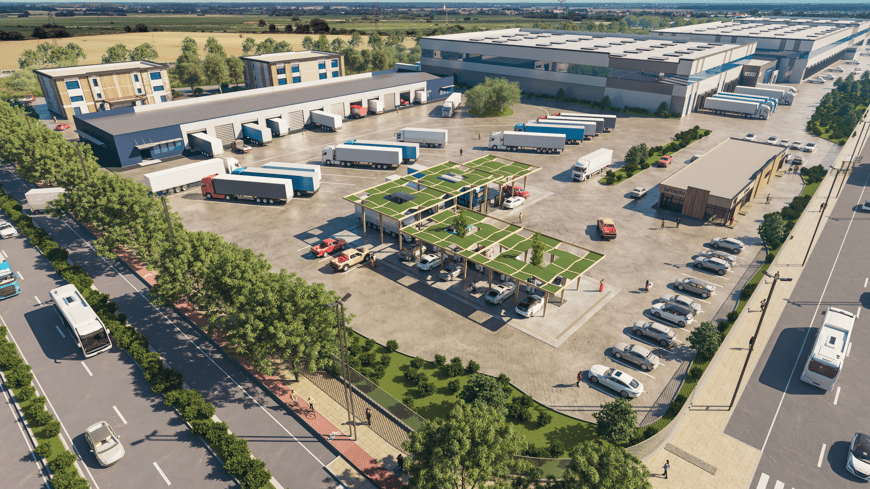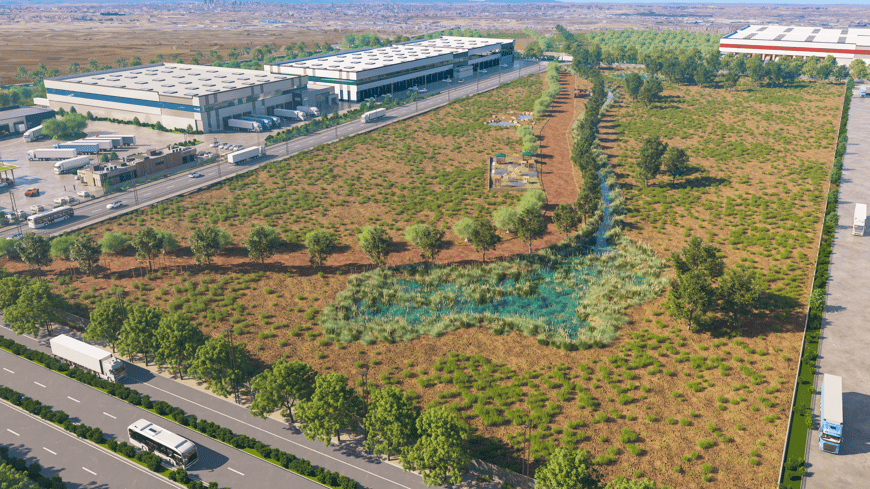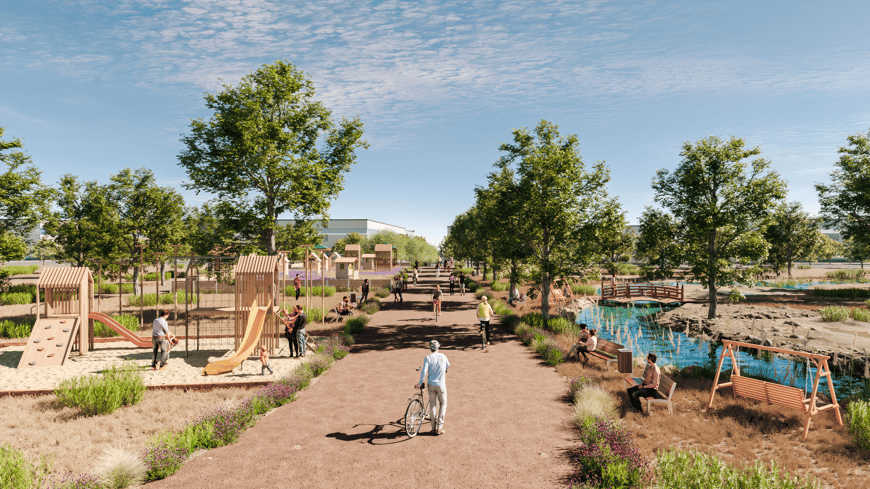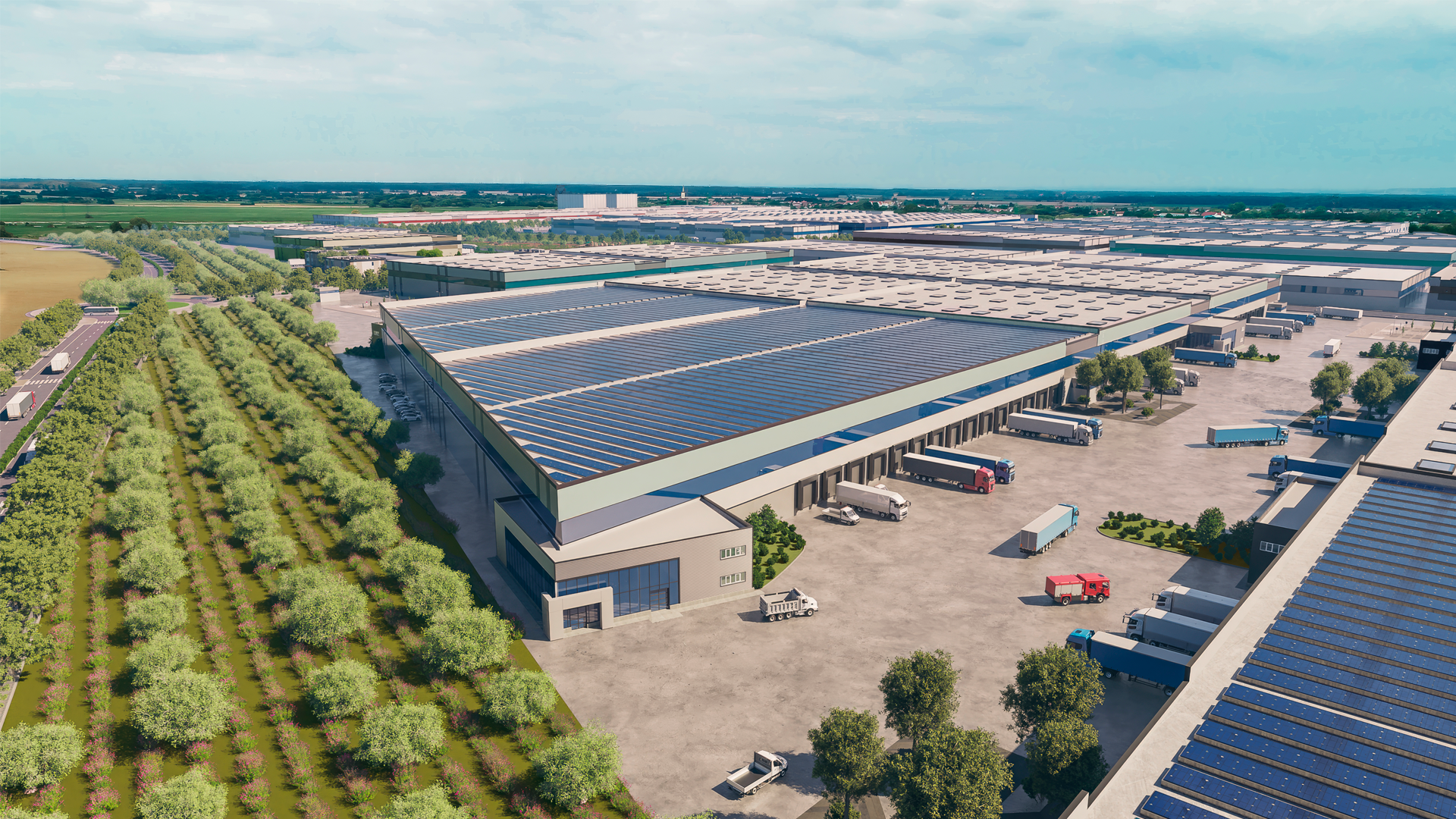LEED v4.1 for Cities and Communities is the LEED certification rating system that evaluates the sustainability of new and existing urban developments. Logistik City Green Life has been the first project to obtain LEED Platinum Precertification in Spain, setting a precedent for a sustainable urban future in the country.
What is Logistik City Green Life?
Logistik City Green Life is the first major urban development in Spain to be LEED pre- certified to the Platinum level using the LEED for Cities and Communities rating system.
The future urban development will be located to the southeast of the municipality of Valdemoro, between Valdemoro and Ciempozuelos. It will have a surface area of approximately 136 Ha, distributed mainly between green areas and industrial use, together with other specific uses, such as an electric-power station, administrative buildings, and restaurants.
Logistik Service is the land holder and developer of the project. The design of the area has been the task of its technical department; as well as the projects and the construction of the building will be executed by their specialized technical & construction departments.

Logistik City Green Life is a large project based on an in-depth multidisciplinary study, which has made the Environmental Strategy one of the main lines of action; among its various measures proposed are the protection of the archaeological remains of the site, or the hydrological recovery of the “Arroyo de Santiago”.
Sustainable urbanism: LEED v4.1 for Cities and Communities
LEED v4.1 for Cities and Communities Communities is a sustainability certification system for new and existing urban developments under the LEED © international seal and managed by the U.S. Green Building Council (USGBC). This rating system allows communities to select the focus areas of greatest importance through strategies organized around several categories:
- Integrative process
- Natural systems and ecology
- Transportation and land use
- Water efficiency
- Materials and resources
- Quality of life
- Energy and greenhouse gas emissions
- Innovation
- Regional priority
Specifically, Logistik City Green Life has obtained the highest precertification level (Platinum, more than 80 points) using LEED v4.1 Communities: Plan and Design rating system, aimed at new developments included in existing municipal areas. This has allowed to evaluate the strong sustainability component of the project quantitatively and qualitatively, with the help of Zero Consulting. The next step: obtaining Final Certification.
Project strengths evaluated by the certification
The Logistik City Green Life project has demonstrated great potential as a sustainability milestone and urban-environmental regenerator. The most relevant aspects of sustainability integrated in the project are:
1. Ecological strategy
The ecological strategy is one of the Logistik City Green Life's greatest strenghts, as it is based on a thorough and solid environmental study. A complete environmental inventory has been carried out (flora and fauna), a soil and topography characterization study has been conductes, and the hydrology and aquatic ecosystems, among others, have been evaluated. This has made it possible to verify that the project does not pose a risk to the environment, and to make proposals for the restoration of natural resources. Since there are more than 2,000 expected itinerant users, a total of more than 16 Ha of green space has been guaranteed, corresponding to an area of more than 70m2 per user.

2. Energy strategy
In line with the Spain 2050 agenda, operational carbon neutrality through renewable energies has been proposed as a goal. This means, in the case of Logistik City Green Life, that all energy consumed will be compensated by photovoltaic energy.
In general, the highest energy consumption in a new urban development is due to the construction of buildings, so measures to reduce consumption will also be implemented. For example, exceeding the requirements of the Spanish Technical Building Code (CTE) to reduce demand, or installing high-efficiency equipment and lighting. To control and verify the success of these strategies, they will be integrated into a Smart Grid format, monitoring the behavior of the entire network.
3. Water strategy
The entire project is focused on preserving the water resource, while recovering water systems such as the “Arroyo de Santiago”. In general, the greatest water consumption of a new urban development is due to irrigation, so only native or adapted species with low water needs will be planted, grouped in hydrozones according to their demand curves. The water used for irrigation will be exclusively water collected from rainwater.
To minimize the depletion of groundwater, the proposals studied for Sustainable Urban Drainage Systems (SUDS) integrated into green areas will be defined. For buildings, low-flow taps and equipment will be installed to minimize demand. To control and verify the success of these strategies, the network will include smart meters that monitor water consumption and detect possible leaks.
4. Waste strategy
It is planned to implement measures that will allow the separation at source of all recyclable waste produced at the new development: paper and cardboard, glass, light packaging and plastic, metal, WEEE, etc. This waste will be managed through the many authorized local waste facilities surrounding the site, such as the “Punto Limpio de Valdemoro”. An external composting treatment is also planned for pruning and gardening waste. This waste, once composted, returns to the site to be used in the maintenance of green areas. In this way, the waste begins a new life cycle as a resource.

5. Transportation strategy
The objective regarding transportation is to maximize walking and cycling, thanks to the integration of accessible and safe routes for them throughout the area. In addition, the implementation of the electric car station will provide access to the new development by electric vehicles. In addition, the expansion of public transport services has been requested, all aimed at promoting sustainable mobility.
6. Social and comfort strategy
The first step in shaping this strategy was to conduct a socio-economic study, as well as a study of facilities and services within a reasonable distance from the site. In order to balance industrial uses with the social exploitation of public space, in addition to green areas, outdoor exercise areas and connections with the Bolitas del Airón Park (adjacent to the site) have been included. In addition, lighting has been designed to avoid light pollution, and air pollution monitoring is planned.
7. Materials strategy
A catalog of the materials included in the project has been drawn up, with the objective that at least 60% of the top five materials by cost (including aggregates and PVC) should be recycled.
The integration of this series of environmental measures into the project has enabled Logistik City Green Life to become a reference for sustainable urban planning. The project has successfully linked infrastructure and nature, demonstrating that a conscious approach to sustainability can coexist with appropriate and functional urban development.


